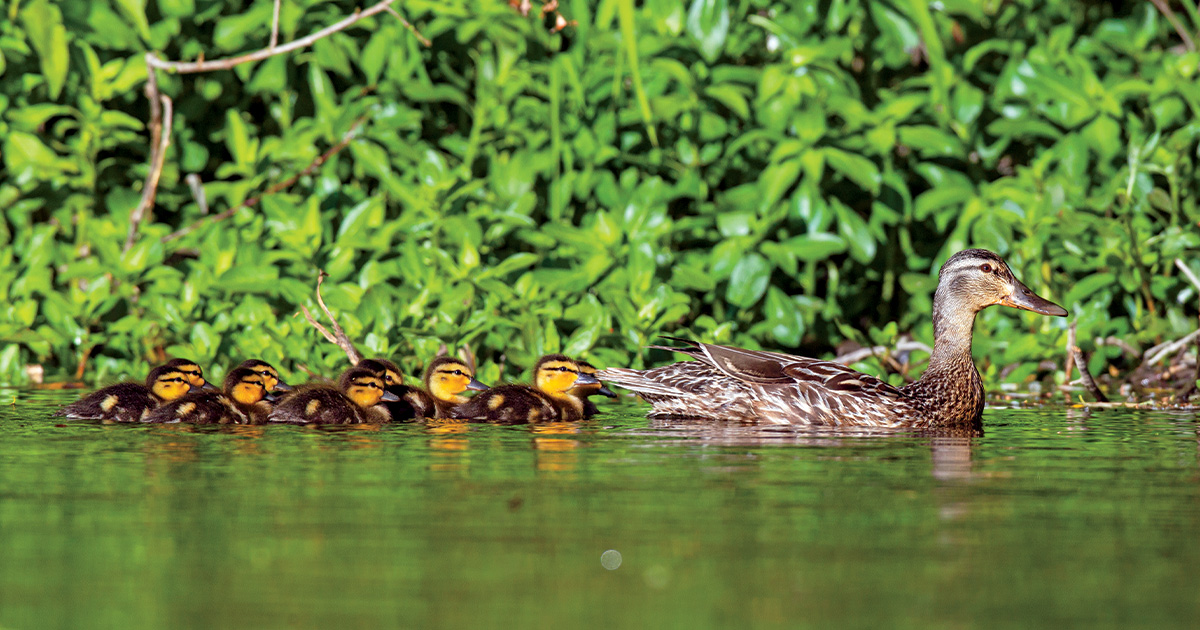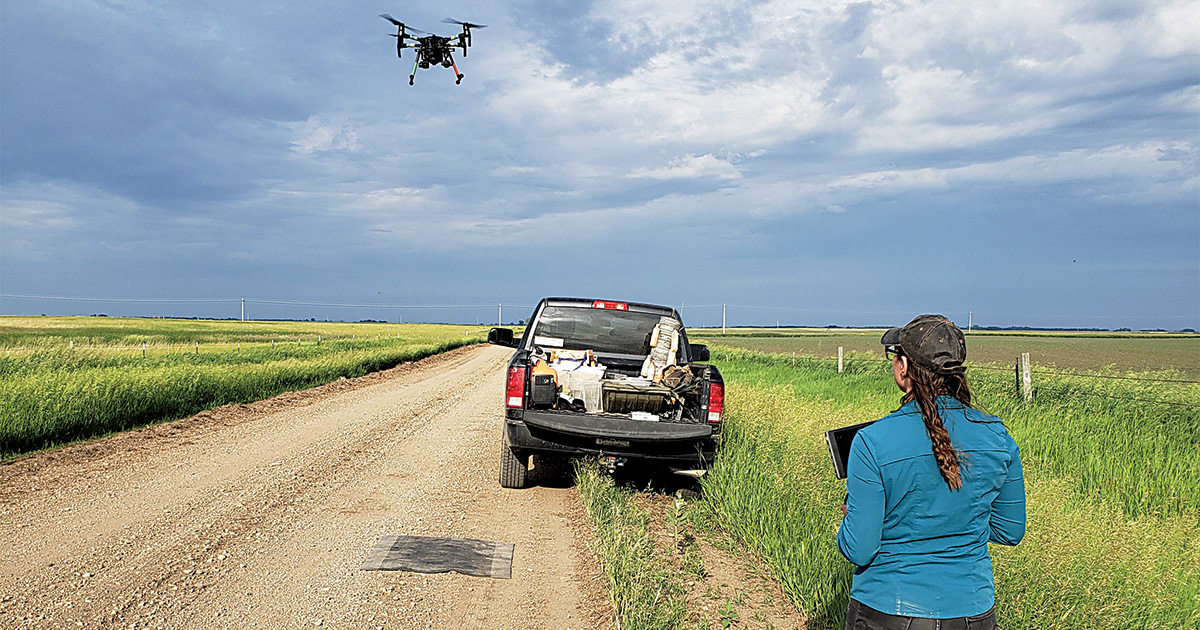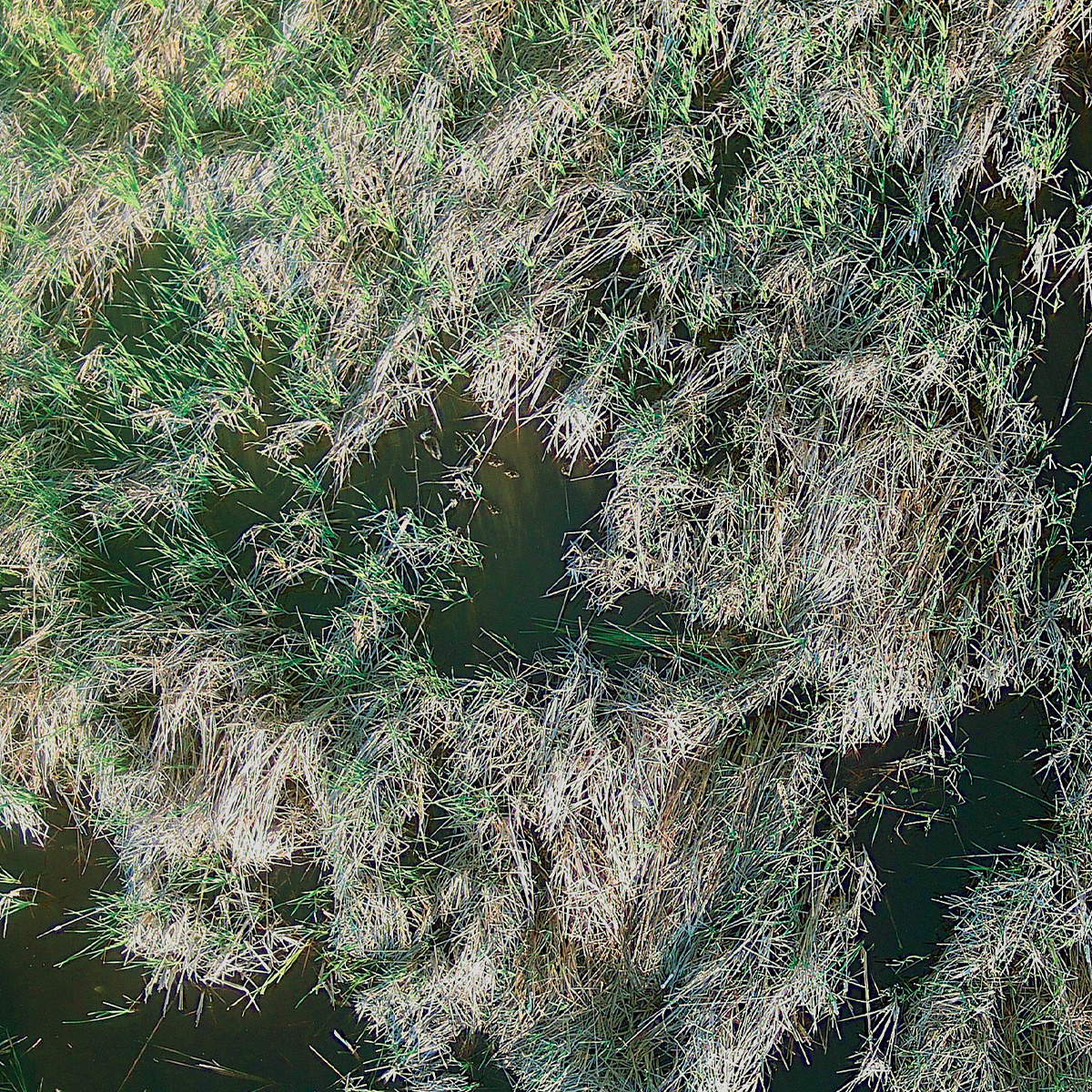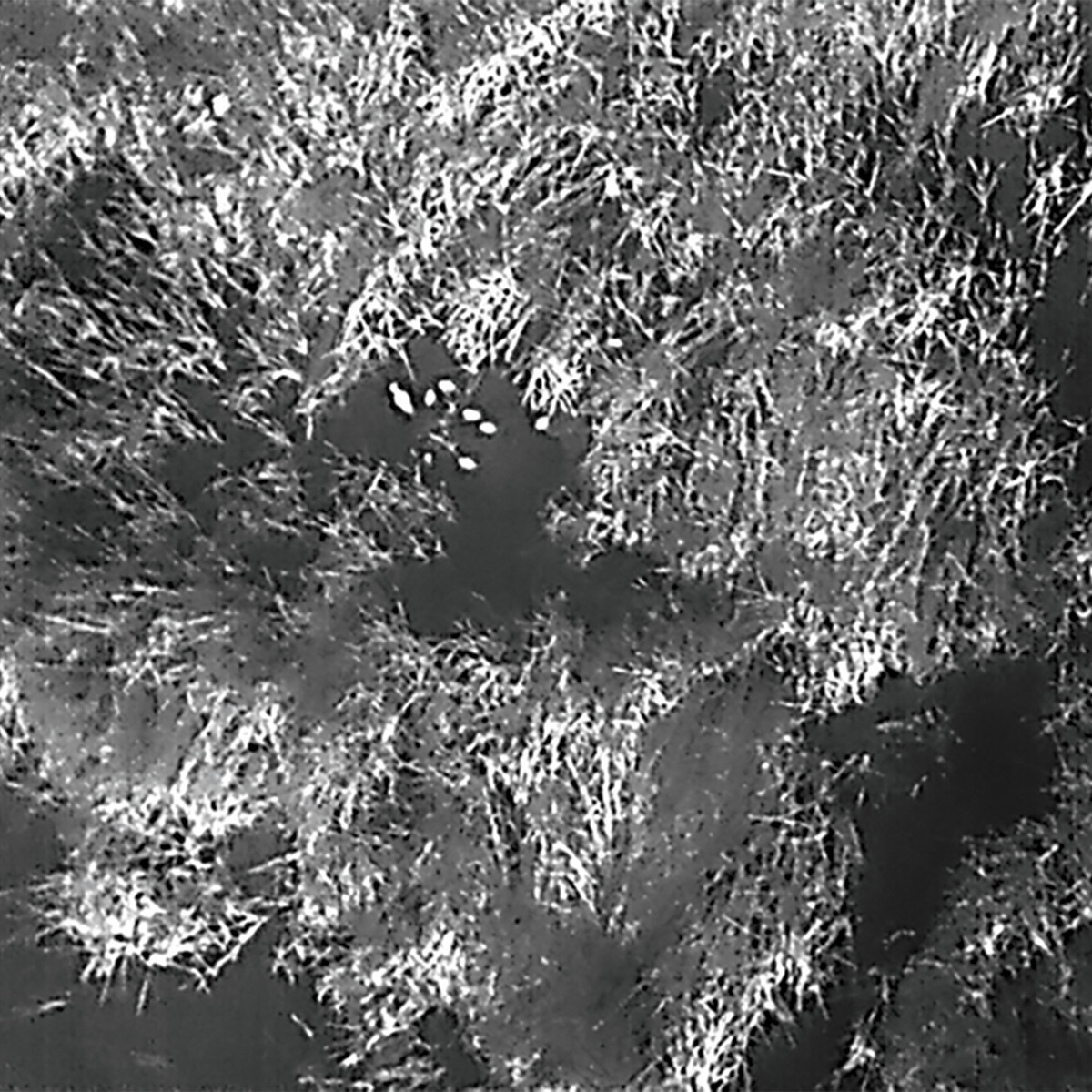The Secret Lives of Broods
New technology is helping scientists better understand this crucial period in the annual cycle of waterfowl
New technology is helping scientists better understand this crucial period in the annual cycle of waterfowl
By Catrina Terry and John M. Coluccy, PhD

A duckling begins its life in the nest, but it doesn’t remain there long. Within 24 hours of hatching, ducklings follow their mother to water. A hen may waddle with her brood in tow for up to a mile to find a suitable wetland. It can be a perilous journey, but the hen is very attentive, and if a predator approaches, she will feign injury to lure it away. Once the danger has passed, she will produce a series of soft, guttural quacks to round up her ducklings before continuing their trek.
The wetland that the hen seeks will offer safety, security, and food for her young family. Once they reach the water, however, they are not out of the woods. Ducklings are small and defenseless, and they will flee at the first sign of danger. Most mortality occurs during the first two weeks of life. To survive and grow, ducklings must pack on protein and calories by consuming large numbers of aquatic invertebrates. Until they are old enough to regulate their body temperature, they rely on their mother for warmth and shelter. During periods of cold, wet weather, many succumb to the elements.
Just as in the uplands, there are many creatures in the marsh that want to eat ducklings. Wetland predators come in many forms, including mink, snapping turtles, great blue herons, northern pike, and even bullfrogs. As a result, hens and ducklings spend much of their time in dense stands of emergent vegetation such as bulrushes or cattails, relying on their cryptic plumage to blend into the surroundings.

Due to their secretive nature, hens and ducklings can be difficult to study in the field. Aerial drones have recently improved the ability of researchers to locate and monitor waterfowl broods across broad landscapes.
This behavior can make observing hens and ducklings a challenge for waterfowl researchers. Preferred brood habitats are often large emergent marshes that are full of thick vegetation, providing plenty of places for hens and ducklings to hide. While helicopters have been used in some studies, researchers discovered much of what we know about waterfowl brood ecology by spending long hours scanning wetlands with binoculars. These techniques are time-consuming and expensive and often provide limited information due to low rates of brood detection.
Fortunately, recent technological breakthroughs have made it much easier for scientists to locate and monitor hens and broods in their natural habitats. Unoccupied aerial vehicles, commonly known as drones, have proven to be especially helpful. Drones are not only much less expensive and easier to operate than fixed-wing aircraft and helicopters, they can also be equipped with thermal cameras that can detect the heat signatures of ducklings in dense vegetation. While adult hens are well insulated by their feathers, downy ducklings lose heat quickly, making them easy to spot. Researchers with Louisiana State University (LSU) compared the results of brood surveys that used drones equipped with thermal cameras to surveys using traditional methods. The drones detected twice as many broods.


(From top) An aerial photo taken with a traditional camera and an image of the same location taken with a thermal camera. By detecting the heat signatures produced by ducklings, drones equipped with thermal cameras help researchers spot waterfowl broods in thick cover.
These technological advances are helping scientists answer important questions about the habitat needs and survival of waterfowl broods at the landscape level. For example, one of the first studies evaluating brood habitat with drone technology was conducted by researchers with LSU and Iowa State University (ISU) in the US portion of the Prairie Pothole Region. Using aerial drones equipped with both thermal and traditional optical cameras, the researchers surveyed and sampled wetlands for broods over three summers in North Dakota, South Dakota, Minnesota, and Iowa. The wetlands that were monitored in this study were surrounded by row crop agriculture, and researchers detected numerous duck broods on these highly modified landscapes. Larger wetlands with an abundance of aquatic invertebrates were found to support the most broods. While all the wetlands in this study were surrounded by cropland, those on landscapes with more grasslands nearby were more likely to contain broods.
In another example, researchers with the State University of New York–Brockport are leveraging ongoing research in which more than 1,000 hen mallards and American black ducks in the Atlantic Flyway have been marked with GPS acceleration tracking devices. These devices allow researchers to identify the precise nesting locations of incubating hens. When the marked hens hatch their broods, their GPS locations are provided to drone operators, who locate each hen, document the presence or absence of a brood, and count the number of ducklings. The drone operators fly three separate surveys during the brood-rearing period to estimate brood success (meaning the probability of at least one duckling surviving to fledging), as well as brood movements and home-range size and composition. In the first year of this study, the drones were able to find and confirm 84 percent of marked hens with broods—a detection rate significantly higher than traditional methods typically yield.
Drone technology also holds great promise in supporting waterfowl population surveys. North Dakota Game and Fish (NDGF) has conducted roadside duck brood surveys since 1955, providing a valuable index of duck populations and breeding success for 70 years. Researchers from ISU and the US Fish and Wildlife Service Habitat and Population Evaluation Team recently worked with NDGF to incorporate aerial drones into these surveys. During the pilot season, researchers confirmed that the use of drones improved the accuracy of brood estimates in surveyed areas.
These are just a few examples of how drones and other new technologies are helping us learn more about the fascinating lives of waterfowl broods. Armed with these new capabilities, DU and its partners are working to gain a better understanding of the environmental factors that drive brood success and duckling survival. In turn, this information will help us protect, restore, and enhance vital habitats to improve the productivity of breeding waterfowl on the prairies and other high-priority areas across the continent.
Catrina Terry is a research scientist in DU’s Great Plains Region. Dr. John Coluccy is director of science and conservation planning in DU’s Great Lakes/Atlantic Region.
Ducks Unlimited uses cookies to enhance your browsing experience, optimize site functionality, analyze traffic, and deliver personalized advertising through third parties. By continuing to use this site, you agree to our use of cookies. View Privacy Policy